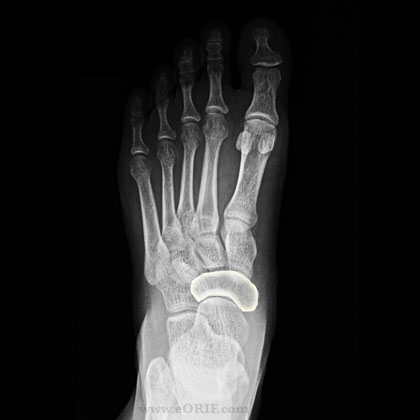

If these methods are found to be ineffective, your doctor will recommend using
Physical therapy: After the initial rest period, your doctor will recommend special non-weight-bearing exercises and other techniques to strengthen the bones and improve your range of motion. Medications: Your doctor will recommend over-the-counter anti-inflammatory medications to reduce inflammation and pain. Elevation: You need to elevate your leg when possible, to relieve swelling. Compression: Pressure should be applied to the affected site to reduce pain. Ice: Apply ice for 10 minutes at a time to relieve pain and inflammation. Weight-bearing on the affected leg is limited until the area is healed which can take 4 to 8 weeks. Rest: Your doctor will advise you to avoid high-impact exercises and activities. Treatments for a navicular stress fracture include: What are the Treatments for a Navicular Stress Fracture? MRI Scan: This is an imaging study that uses a large magnetic field and radio waves to produce detailed images of the foot. Bone scan: This is a nuclear imaging study that helps your doctor identify hard-to-detect stress fractures or any bone disorders. CT scan: This study creates detailed images of the foot using X-rays from different angles. However, stress fractures may be difficult to visualize on X-rays. X-rays: During this study, high electromagnetic energy beams are used to produce images of broken bones. Diagnostic tests that may be ordered include: Your doctor will review your symptoms, and medical history and perform a thorough physical examination to check for swelling or bruising restricted range of motion, or tenderness. However, it can turn into a steady pain even when at rest and escalate to pain with low-intensity activities like walking. 
Patients frequently only experience discomfort initially after performing vigorous activities like jogging or leaping. Discomfort when moving, running, or leaping.Tenderness when pushing on the navicular bone.Discomfort in the arch and center or top of the foot.Swelling or bruising over the middle part of the foot.Signs and symptoms of a navicular stress fracture include: What are the Symptoms of Navicular Stress Fracture? Restricted ankle dorsiflexion (the ability to raise your foot toward your knee).Excessive pronation (inward tipping of the foot).Atypical foot structure, such as high arches.Poor nutrition (vitamin D deficiency and low-calorie intake).Modification of the apparatus, such as new footwear or a new training surface.Increased sports training amount, frequency, or intensity.Some of the factors that might contribute to the development of a navicular stress fracture include: What are the Causes of a Navicular Stress Fracture?
NAVICULAR STRESS FRACTURE SYMPTOMS CRACK
A navicular stress fracture is described as a small crack in the navicular bone (a boat-shaped bone located at the top of the middle part of the foot), which occurs from too much stress being placed on the bone from repetitive activities.






 0 kommentar(er)
0 kommentar(er)
